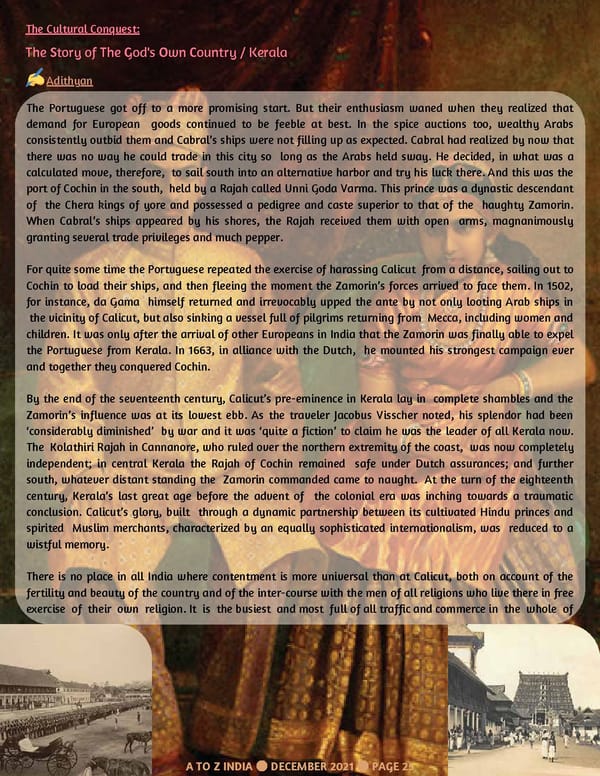The Portuguese got off to a more promising start. But their enthusiasm waned when they realized that demand for European goods continued to be feeble at best. In the spice auctions too, wealthy Arabs consistently outbid them and Cabral’s ships were not filling up as expected. Cabral had realized by now that there was no way he could trade in this city so long as the Arabs held sway. He decided, in what was a calculated move, therefore, to sail south into an alternative harbor and try his luck there. And this was the port of Cochin in the south, held by a Rajah called Unni Goda Varma. This prince was a dynastic descendant of the Chera kings of yore and possessed a pedigree and caste superior to that of the haughty Zamorin. When Cabral’s ships appeared by his shores, the Rajah received them wi th open arms, magnanimously granting several trade privileges and much pepper. For quite some time the Portuguese repeated the exercise of harassing Calicut from a distance, sailing out to Cochin to load their ships, and then fleeing the moment the Zamorin’s forces arrived to face them. In 1502, for instance, da Gama himself returned and irrevocably upped the ante by not only looting Arab ships in the vicinity of Calicut, but also sinking a vessel full of pilgrims returning from Mecca, including women and children. It was only after the arrival of other Europeans in India that the Zamorin was finally able to expel the Portuguese from Kerala. In 1663, in alliance with the Dutch, he mounted his strongest campaign ever and together they conquered Cochin. By the end of the seventeenth century, C alicut’s pre-eminence in Kerala lay in complete shambles and the Zamorin’s influence was at its lowest ebb. As the traveler Jacobus Visscher noted, his splendor had been ‘considerably diminished’ by war and it was ‘quite a fiction’ to claim he was the leader of all Kerala now. The Kolathiri Rajah in Cannanore, who ruled over the northern extremity of the coast, was now completely independent; in c entral Kerala the Rajah of Cochin remained safe under Dutch assurances; and further south, whatever distant standing the Zamorin commanded came to naught. At the turn of the eighteenth century, Kerala’s last great age before the advent of the colonial era was inching towards a traumatic conclusion. Calicut’s glory, built through a dynamic partnership between its cultivated Hindu princes and spiri ted Muslim merchants, characterized by an equally sophisticated internationalism, was reduced to a wistful memory. There is no place in all India where contentment is more universal than at Calicut, both on account of the fertility and beauty of the country and of the inter-course with the men of all religions who live there in free exercise of their own religion. It is the busiest and most full of all traffic and commerce in the whole of A TO Z INDIA ● DECEMBER 2021 ● PAGE 25 Adithyan The Story of The God's Own Country / Kerala The Cultural Conquest:
 A TO Z INDIA - DECEMBER 2022 Page 24 Page 26
A TO Z INDIA - DECEMBER 2022 Page 24 Page 26